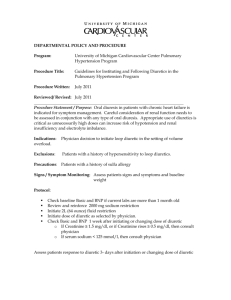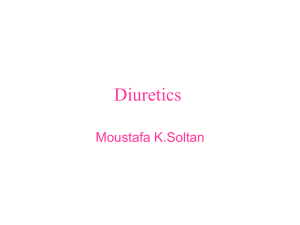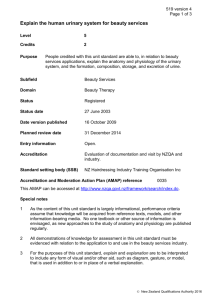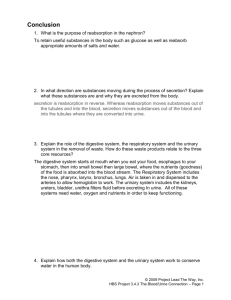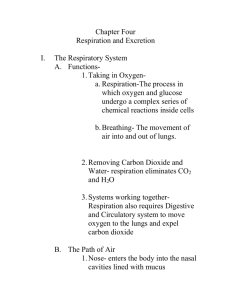Diuretics
advertisement
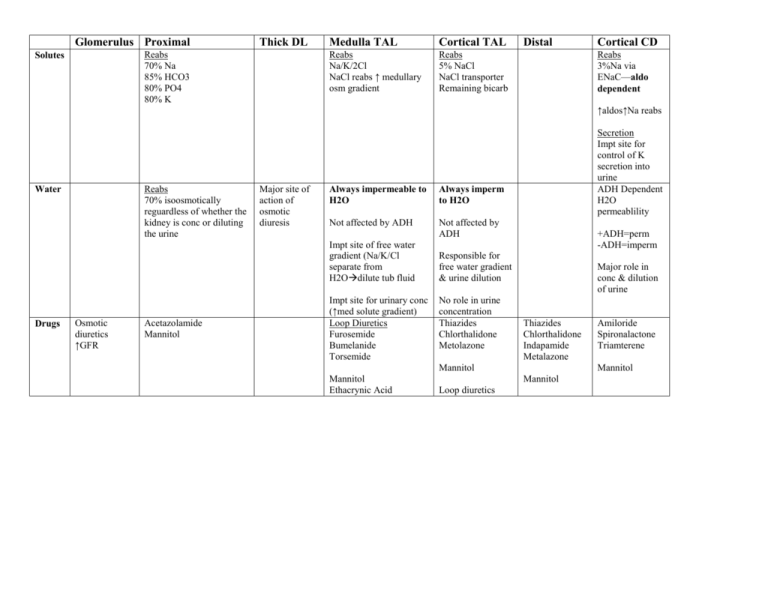
Glomerulus Proximal Thick DL Reabs 70% Na 85% HCO3 80% PO4 80% K Solutes Medulla TAL Cortical TAL Reabs Na/K/2Cl NaCl reabs ↑ medullary osm gradient Reabs 5% NaCl NaCl transporter Remaining bicarb Distal Cortical CD Reabs 3%Na via ENaC—aldo dependent ↑aldos↑Na reabs Reabs 70% isoosmotically reguardless of whether the kidney is conc or diluting the urine Water Major site of action of osmotic diuresis Always impermeable to H2O Always imperm to H2O Not affected by ADH Not affected by ADH Impt site of free water gradient (Na/K/Cl separate from H2Odilute tub fluid Drugs Osmotic diuretics ↑GFR Acetazolamide Mannitol Impt site for urinary conc (↑med solute gradient) Loop Diuretics Furosemide Bumelanide Torsemide Secretion Impt site for control of K secretion into urine ADH Dependent H2O permeablility +ADH=perm -ADH=imperm Responsible for free water gradient & urine dilution No role in urine concentration Thiazides Chlorthalidone Metolazone Major role in conc & dilution of urine Thiazides Chlorthalidone Indapamide Metalazone Mannitol Mannitol Ethacrynic Acid Mannitol Mannitol Loop diuretics Amiloride Spironalactone Triamterene Drug Acetazolamide Mechanism PT= major site of action Carbonic Anhydrase Inhibitor (luminal & intracellular) Loop Diuretics Furosemide Bumetanide Torsemide Inhibits Na/H exchange at apical memb & basolat HCO3 reabs Blocks Na/K/2Cl co-trnspt in TALH Secr into PT via organic acid pthway & transpted to site of axn Acts on luminal border Tubular secretion is potentiated by albumin Hypoalbuminemia impairs secretion, ↑metabolism, ↓potency Osmotic Mannitol Glucose Urea PT: Na reabs inhibited due to ↓H2O reabs Low MW Freely filtered Not reabs No pharm effects besides osmotic DthinLH: major tubular effect here ↓tubular fluid osmgreater passive influx of Na from interstitium & ↑Na excretion & tubular flow rates DLH: ↓H2O reabs 2º to osmotic effect CT: ↓urea reabsfurther ↓interstitial osmolality Vasa recta: ↑blood flowdissipation of conc of solute in medullary interstitium (medullary washout)impaired free water excrmay account for majority of diuretic effect Effects on Urine Plasma 1. ↑ urinary HCO3 excretion (alkaline) 2. Normal anion gap met acidosis (lose of urinary HCO3 & blking prox H+ secretion) 3. ↑K excretion Potency Mild ↑Na, Cl, K excretion ↑fractional Ca excr up to 30% ↑fracitonal Mg excr up to 60% ↑↓Uric acid excretion Acute admin--↑uric acid Chronic—vol conc results in ↓excretion High ↓free water reabs (impared urinary conc) ↓free water clearance (impaired urinary dilution) Adverse effects 1. Vol depletion 2. HypoK 3. Met alkalosis 4. HypCa 5. HypoMg 6. Acute interstitial nephritis 7. Deafness (ototoxicity) Highest peak urine flow of all diuretics Effects on systemic circ Vasodilates veins No effect on arteries ↑ Na, K, HCO3, free water excr Dependent on urinary conc of diuretic not plasma conc Na excretion greater than thiazide but less than loop Adverse Effects 1. Vol depletion 2. HyerNa (↑free water cl) 3. HypoNa 4. HypoK 5. ARF (high dosesATN) Uses 1. Glaucoma (Methazolamide) 2. To alkalinize urine Cystinuria Severe hyperuricemia Uric acid calculi Tx of met alkalosis in edematous states Edematous states Diuretics of choice for: 1. Pulm edema 2. Edema in pts w/renal failure 3. Nephrotic syndrome Non-edematous states 1. HTN 2. Hypercalcemia 3. ARF 4. Acute hyperuricemia (vol contraction must be prevented) 5. Severe hypNa (used w/hypertonic NaCl) Not used to tx edema b/c expand ECF which is already over expanded 1. ARF (prophylactically) 2. Cerebral edema (↓brain water) 3. Severe hyperuricemia (↑uric acid excr) 4. Dialysis disequilibrium synd 4. Intoxications Drug Thiazides Metolazone Indapamide Mechanism Major site of axn=Early DT Blocks 40% NaCl reabs Inhibits active NaCl transpt in CTAL & EDT—Thiazide sensitive Na/Cl trnspt Effects on Urine Plasma ↑Na, Cl, K exretion Very lg K losses w/combo of Metolazone + loop diuretic ↓Calcium excretion ↓uric acid excretion ↓Free water excretion (impairs dil) No effect on Concentration HypoNa HypoK Systemic effects Arteriolar VD (resistance vessels) K Sparing Collecting Tubule Diuretics Spironolactone Competitive inhibition of aldosterone Effect reversed by aldosterone No effect in absence of aldosterone Acts on CCT (principal cell) ↓Na/K ATPase acativity ↓luminal Na-K permeability CCT (principal cells) ↓luminal Na entry by blocking ENaC Independent of Aldosterone Effects additive to those of spironolac Trimterene Amiloride ↑Na excretion, urine vol, plasma K ↓K excretion Potency Moderate Adverse effects: 1. HypoNa 2. HypoK (more common & more severe than loop) 3. Metabolic alkalosis 4. Carb intolerance 5. Hyperuricemia 6. Hypercalcemia 7. Hypersensitivity rxn (acute interstitial nephritis) 8. ↑plasma lipids & ↓HDL Mild Little effect on free H2O excr or reabs Adverse effects 1. HyperK 2. Gynecomastia Identical to spironolactone Mild Uses Edematous states 1. CHF 2. Other edematous conditions w/normal renal fxn 3. Potentiate action of loop diuretics Non-Edematous states (thiazides, indapamide) 1. HTN (first line tx for mild) - Produces vol contraction -arteriolar VD↓vasc resistance 2. Hypercalciuria -dissoc of urinary Na & Ca reabs in DT. Altering Na reabs does not affect Ca trnspt -blkade of luminal Na entry ↓intracell Na stimulating basolat Na/Ca exchange - vol contraction↑PT & loop Ca reabs & less urinary Ca excr -diuretic tubular effect to ↑Ca abs (↑ tubular permeability) 3. Diabetes Insipidus -impairs free H2O generationless free H2O to excrete & ↓urine volume -↓distal delivery by enhanced proximal reabs 1. to potentiate the axn of other diuretics in tx of edema 2. pts w/edema & acites due to live disease 3. to prevent diuretic induced urine K losses 4. Non-edematous states—diagnosis & tx of hyperaldosteronism Like spironolactone excpt not in hyperaldosteronism Adverse effects 1. HyperK 2. Renal calculi (trimterene) 3. ARF when trimterene + NSAIDS Diuretic Resistance: 1. Breaking Effect Prolong administration of diuretic result in plateau in wt loss & subsequently return to previous weight This results from an increased stimulus for Na retention created by diuretic induced reduction in ECF; can be prevented by Na restriction; overcome by more frequent diuretic dosing or continuous infusion 2. Vol contraction, decreased renal flow, decreased GFR, inadequate dosing, inadequate GI absorption


